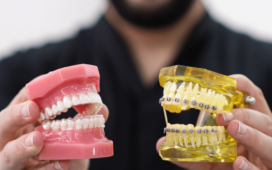Dental X-rays are a vital diagnostic and surveillance tool for issues about oral health that might not be apparent during a standard dental checkup. Nonetheless, in Lincoln, Nebraska individuals frequently ponder how often they should get dental X-rays to preserve their best oral health and avoid needless radiation exposure. We’ll go over the standards and advice for dental X-rays in dental practice in Lincoln, NE in this blog article to assist patients in making well-informed choices regarding their oral health.
Comprehending Dental X-Ray Images
Dental radiographs, sometimes referred to as X-rays, are pictures of the teeth, gums, and surrounding tissues that give dentists important diagnostic data. These pictures assist dentists in identifying potential treatment-related dental problems, evaluating tooth roots, detecting cavities, and determining bone density.
Factors Influencing Frequency of Dental X-Rays
Several factors influence how often a patient should undergo dental X-rays, including:
1.Age and Oral Health History: More regular X-rays may be necessary for patients with a history of dental disorders or circumstances that raise the risk of oral health complications. In addition, because of variations in their oral growth, children and adolescents may require X-rays more frequently than adults.
2. Risk Factors: To constantly monitor their dental health, patients who have certain risk factors, such as a high susceptibility to cavities or periodontal disease, may need more regular X-rays.
3. Symptom Presence: X-rays may be necessary to determine the underlying source of symptoms in patients exhibiting tooth pain, swelling, or gum irritation.
Recommendations for Dental X-Rays
The American Dental Association (ADA) provides guidelines for the frequency of dental X-rays based on individual patient needs and risk factors. In general, the ADA recommends the following:
- Routine Check-Up X-Rays: For patients with no history of dental issues and low risk of oral health problems, routine check-up X-rays may be recommended every 1-2 years.
- Bitewing X-rays: Bitewing X-rays, which focus on the upper and lower back teeth, are typically recommended every 1-2 years for adults and children, depending on individual risk factors and oral health status.
- Full Mouth Series: For adults and children, a whole mouth series of X-rays may be advised every three to five years, or more frequently depending on specific risk factors. The images provide a thorough look at all teeth and surrounding tissues.
Frequent dental X-rays are a crucial part of preventive dental care because they enable dentists to quickly identify and treat oral health problems. You can make sure you receive the right care to preserve your best oral health for years to come by talking with your Lincoln, NE dentist and according to the guidelines and recommendations for dental X-rays. Never hesitate to discuss any worries or inquiries you may have with your dentist about dental X-rays and other areas of your oral health care.

















